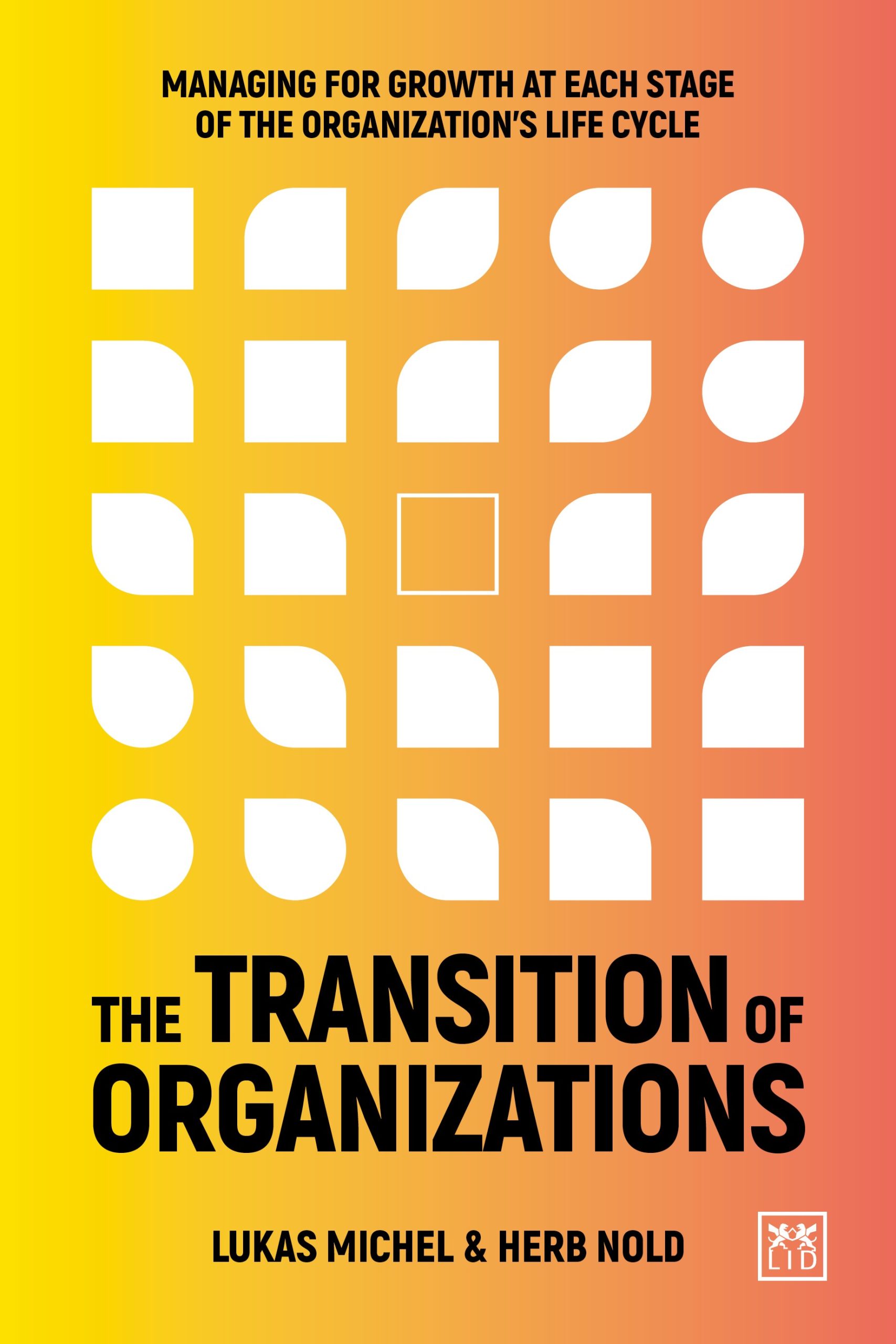The ways in which organisations are led and controlled varies greatly, depending on where they are in their growth cycle, so the leadership and management of a start-up will look very different to that of a large multi-national conglomerate, for example.
But, when leaders know exactly which stage their organisation is at, then they’ll be better equipped to make the right decisions for the transition to whatever future stage might be appropriate to them. And, they’ll have the right tools to successfully work through those transitions.
THE TRANSITION OF ORGANIZATIONS is exactly what this book explores, offering concepts, strategies and approaches to help leaders, managers and consultants to help to do this as effectively as possible.
The authors, Lukas Michel and Herb Nold, build on their extensive work already shared in this field, drawing on Larry Greiner’s ‘Life Cycle Model’, which outlines five stages for growth (creativity, direction, delegation, coordination and collaboration) and using approaches developed from the Performance Model Triangle shared by Lukas in 2013.
The Performance Model Triangle is a framework for ‘a dynamic system of capabilities for an agile organisation.’ This means that an organisation as a whole, is able to adapt to changes in their environments (both internal and external) at speed, without needing to go through large-scale change programmes, which can be both costly and disruptive.
For me, this is the foundation of the book; how leaders and managers can adapt and transition through different growth stages while being able to flex and stay on track. In other words, creating dynamic working environments and being a highly resilient and agile organisation, negating the need for large-scale, disruptive change.
This dynamism is essential. We’re all witnessing a huge acceleration in the speed and complexity of change and particularly driven by the digital economy. Within this context, leaders and managers have to think differently about how they appropriately encourage innovation and growth in their own organisations. This book is a great guide to help them do that.
Across all five sections, the authors break down areas such as structures, capabilities and systems needed to work through the lifecycle, helping managers skilfully navigate the journey to building a more agile organisational approach and reducing the potential impact of crises between the different growth stages.
With summaries at the end of each chapter, practical questions that leaders and managers can take away and use in their own work and teams and an action agenda for each chapter to take forward, Michel and Nold offer a very understandable blend of models, supported by practical insight and evidence-based research.
For me, this five-part book gives the reader a roadmap to help them to step back from the detail of running their organisation and critically assess where they are in their growth journey and navigate their own overarching organisational growth framework. It equips them with the tools they need to both understand where they are in their own growth or innovation journey and optimise their transitions to future phases.
And, unlike other books I’ve read around this topic, which can often miss the important role of human beings in organisations, there is a real focus on people and their importance of people in making growth and transition work for any organisation, across this book. One quote that stayed with me is this one, from Chapter 5 which leaders and managers (and consultants) can ignore at their peril:
“For effective organisational agility, people need to be the centre of both leadership and management attention.”
This book is a brilliant read and reference for any leader or manager who wants to understand how to make management a real competitive advantage and develop a resilient, agile organisation, fit for growth. It would also prove useful for those interested in organisational development and change management.
Published by LID publishing
Jo Twiselton, Change coach & consultant, founder of Twist Consultants









